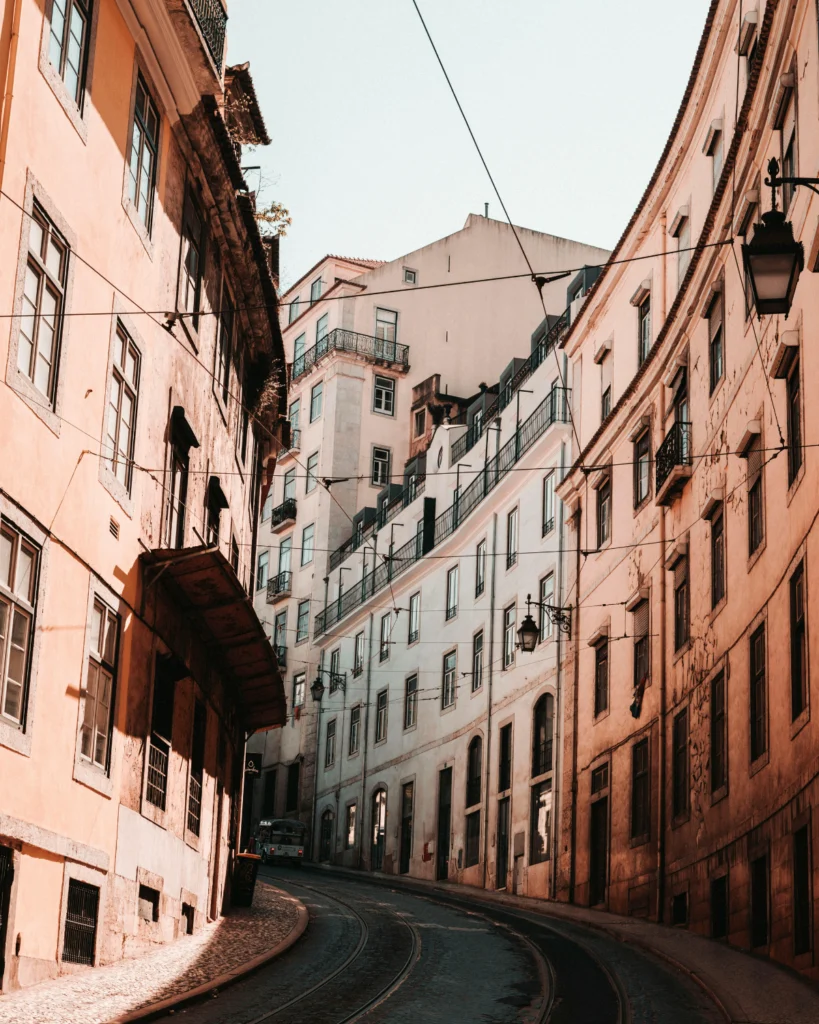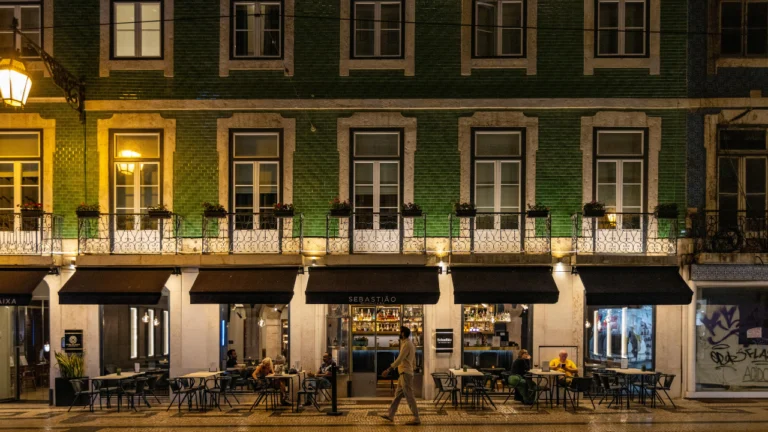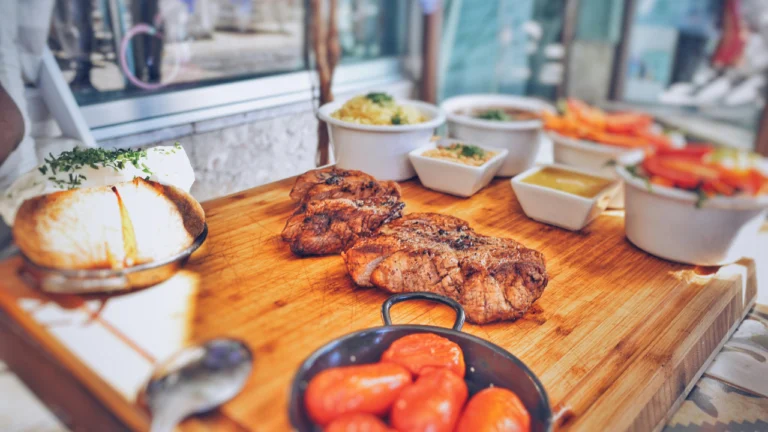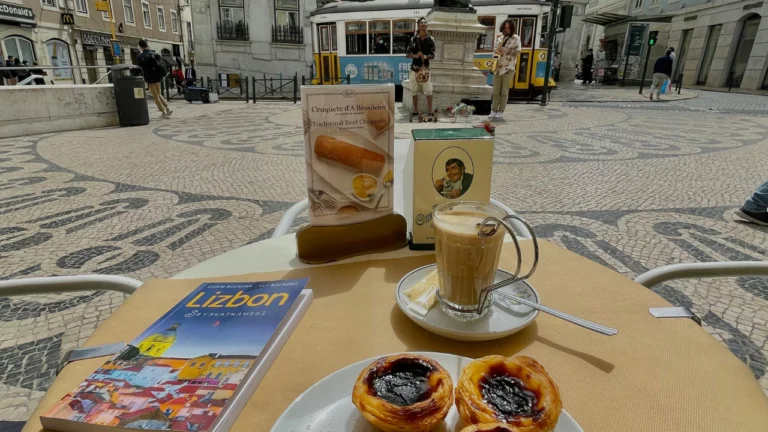Lisbon Food Tours First Timers Need Local’s Guide 2025
Last updated on August 18, 2025 at 01:16:58
The moment happened at 11:47 on a drizzly Tuesday morning, somewhere between a crumbling azulejo wall and a fishmonger’s stall in Mercado de Arroios. Maria, our seventy-something guide with gold teeth and impossible energy, handed me a pastel de bacalhau so hot it scorched my fingertips. “Eat now,” she commanded, “before the magic escapes.” That first bite – crispy shell giving way to creamy salt cod, still steaming, touched with the faintest whisper of parsley – rewired something fundamental in my understanding of what food could be. It was the kind of revelation that explains why lisbon food tours first timers quickly realize these aren’t just meals, but cultural lessons served on a plate
Three years and one Alfama apartment later, I’m watching British tourists make the same mistakes I nearly did. They’re queueing for TimeOut Market, downloading restaurant apps, studying TripAdvisor reviews like sacred texts. Meanwhile, the city’s real flavours hide in plain sight, accessible only to those who know the secret handshake.
That handshake? It’s a properly chosen Lisbon food tour. And if you’re planning your first Portuguese adventure from the UK, I’m about to save you from a week of mediocre meals and missed connections.
The £50 That Saves Your £500 Holiday
Let me paint you a familiar picture. Day one: you’ve just landed at Portela, navigated the metro with your massive suitcase, and collapsed in your Airbnb. Stomach growling, you venture out and spot a cheerful-looking spot near Restauradores. English menu? Check. Photos of dishes? Check. Smiling waiter beckoning you in? Check.
Ninety minutes and forty euros later, you’re googling “why is Portuguese food bland” while picking at rubbery prawns that taste suspiciously of freezer burn.
Here’s what actually happened: you’ve just paid tourist tax on your ignorance. That same meal? Locals are having it for twelve euros, three blocks away, in a marisqueira where the shellfish arrived this morning from Setúbal and the owner’s mother still makes the rice.
A morning food tour in Lisbon doesn’t just feed you – it hands you the decoder ring for the entire city’s dining scene. You learn that restaurants displaying giant ham legs are tourist traps, that the best bifanas come from stands without signs, and that any place recommended by your hotel concierge takes a commission that inflates your bill by thirty percent.
Consider it reconnaissance disguised as breakfast.
The Unspoken Rules Every Lisbon Food Tours First Timers Should Know
Portuguese dining etiquette isn’t complicated – it’s invisible. Nobody tells you that the bread and olives aren’t free (they’re couvert, and you can refuse them). Nobody mentions that asking for butter with your bread marks you as hopelessly foreign. Or that the waiter ignoring you isn’t rude – he’s being polite by not rushing you.
On my first food tour, our guide Teresa shared intelligence that no guidebook contains. “See how I hold my fork?” she demonstrated, pronging a piece of polvo. “Never cut octopus with a knife – it insults the cook. If you need a knife, the octopus is overcooked.”
These micro-lessons accumulate into fluency. You discover that bica means espresso in Lisbon but cimbalino in Porto. That ordering wine by the bottle is amateur hour – locals order jarros. That the wooden spoon hanging above certain doorways signals they serve cozido à portuguesa on Thursdays.
Suddenly, you’re not performing tourism. You’re participating in tradition.
Test Your Lisbon Food Tour Etiquette!
Lisbon Food Tours First Timers Discover the City Bite by Bite
Forget those colour-coded metro maps and walking tour routes. After a proper food tour, you navigate Lisbon through sense memory. Príncipe Real isn’t just a fancy neighbourhood – it’s where you discovered pão de Deus tastes better dunked in galão. Madragoa transforms from an unknown district to “where that senhora makes arroz de pato that made me cry actual tears of joy.”
My children have unconsciously adopted this system. Lena doesn’t say we’re going to LX Factory; she says we’re going “near the place with the chocolate salame.” Theo knows we’re approaching home when he smells the chestnuts roasting on Rua Augusta. They’re mapping the city through flavour, which is precisely how Lisboetas have done it for centuries.
The Network Effect Nobody Mentions
Here’s what Instagram doesn’t capture: the relationships. That food tour guide? She’s not just showing you where to eat. She’s introducing you to her ecosystem. The café owner who now waves when you pass. The fishmonger who saves you the best carapaus because “you’re Maria’s friend.” The random accountant from Porto on your tour who becomes your dinner companion for the rest of the week.
Last month, I bumped into João, who runs a tasca I discovered on a tour two years ago. He grabbed my arm: “Your friends from England last week – I gave them the table in the back, like you said.” I’d sent them one WhatsApp message. João remembered, accommodated, and probably gave them the local price. That’s the invisible network you’re buying into.
The Confidence That Transforms Your Entire Trip
Watch someone before and after their first Lisbon food tour. Before: they’re pointing at menu items, smiling apologetically, eating at peak tourist hours in empty restaurants. After: they’re confidently ordering percebes, knowing to squeeze lemon on peixinhos da horta, understanding why locals eat caracóis in summer with cold beer.
But it goes deeper. They’ve learned that Portugal runs on relationships, not transactions. That talking to strangers isn’t optional – it’s oxygen. That meals aren’t fuel stops but social architecture. They stop photographing their food and start tasting it. They stop checking their phones and start checking in with their tablemates.
They stop being visitors and start being guests.

Finding Your Perfect Lisbon Food Tour
Not all food tours are created equal. Skip anything with more than twelve people – you’ll spend more time counting heads than tasting food. Avoid tours that promise “10 tastings in 3 hours” – that’s speed-eating, not cultural immersion. Be suspicious of routes that never leave the tourist triangle of Baixa-Chiado-Belém.
Instead, look for morning tours (when markets buzz and locals actually eat), guides who are Lisbon-born (or at least decade-long residents), and itineraries that include at least one “ugly” neighbourhood. The best tours include market visits, family-run tascas, and that one stop where the guide says, “Don’t photograph this place – I’m trusting you.”
Book for your first or second day, never your last. You want time to return to the spots you’ve discovered, to practice what you’ve learned, to become a regular somewhere before you leave.
The Truth About Lisbon Nobody Tells First-Timers
Lisbon isn’t actually about the monuments or the views or even the sunshine that us vitamin D-deprived Brits crave. It’s about the pause between ordering and eating, when the city’s real rhythm reveals itself. It’s about the moment when you stop translating and start understanding. When you stop consuming and start communing.
A food tour cracks that code on day one instead of day never. It transforms your trip from a series of transactions into a sequence of relationships. From photography to memory. From tourism to temporary belonging.
And trust me, once you’ve tasted Lisbon properly – through the eyes and memories of people who’ve loved it their whole lives – you’ll understand why some of us check Rightmove for Alfama apartments after every visit.
Still hungry for insider knowledge? Find me Tuesday mornings at Fabrica Coffee Roasters in Bairro Alto (Lena insists on their croissants), where I’m usually scribbling in my notebook and eavesdropping on Portuguese grandmothers arguing about the proper way to make açorda. Or reach out through Lisbonly – I’ll tell you which food tours are worth your pounds and which are just expensive walking meals.
FAQs About lisbon food tours first timers
Q1: What food is Lisbon famous for?
A: Lisbon is famous for pastéis de nata (custard tarts). In addition, the city is known for fresh seafood and bacalhau dishes. For example, grilled sardines (sardinhas assadas) are a local favorite.
Q2: What is Lisbon’s national dish?
A: Lisbon’s iconic dish is bacalhau à brás, a savory mix of shredded salted cod, onions, and thinly fried potatoes. Moreover, it is often topped with eggs and parsley, making it truly unforgettable.
Q3: What is the most popular food in Portugal?
A: Portugal’s most popular foods include bacalhau (salted cod) and pastéis de nata. Additionally, grilled sardines and hearty stews like caldo verde are widely enjoyed throughout the country.







One Comment